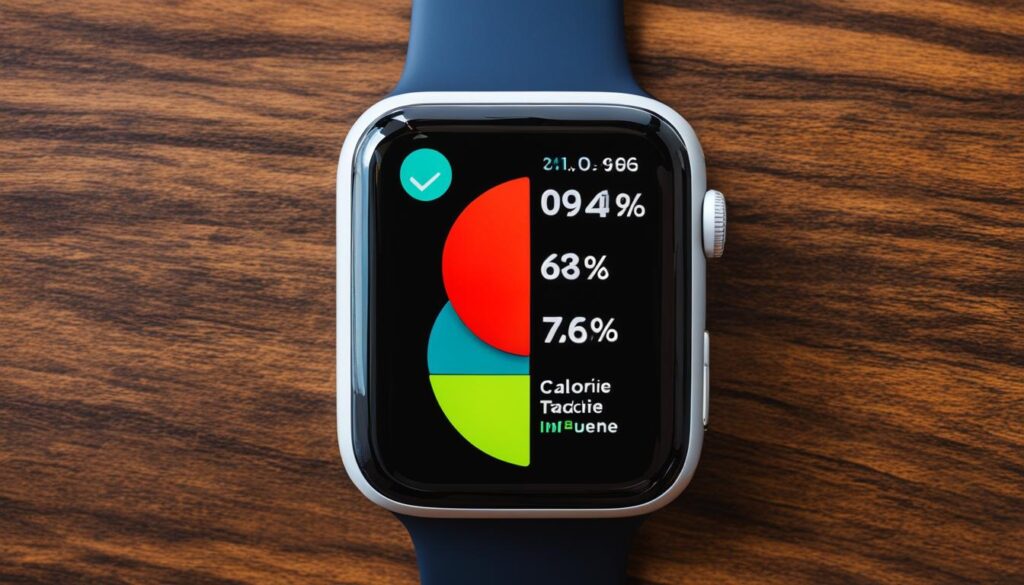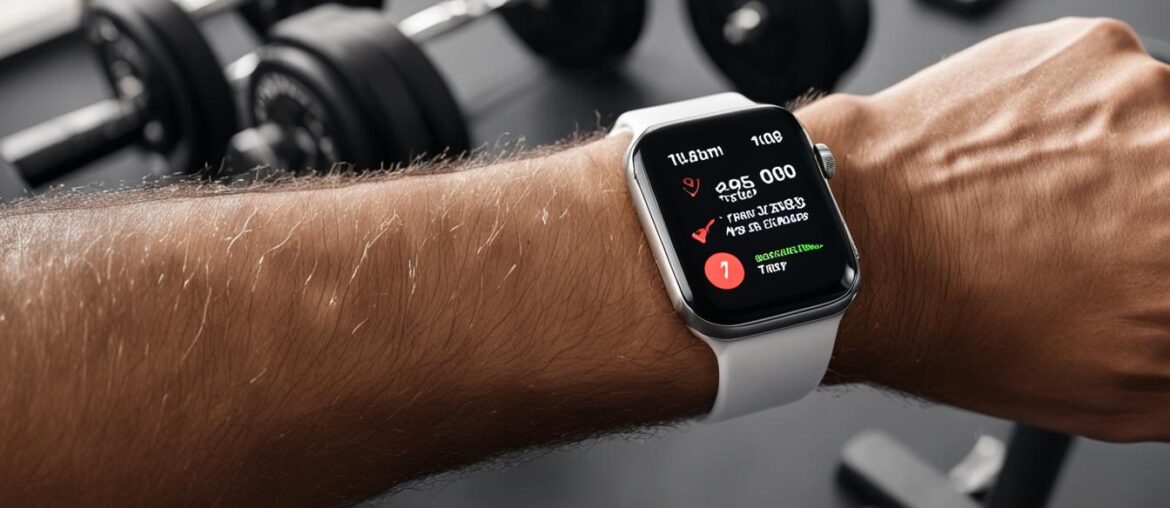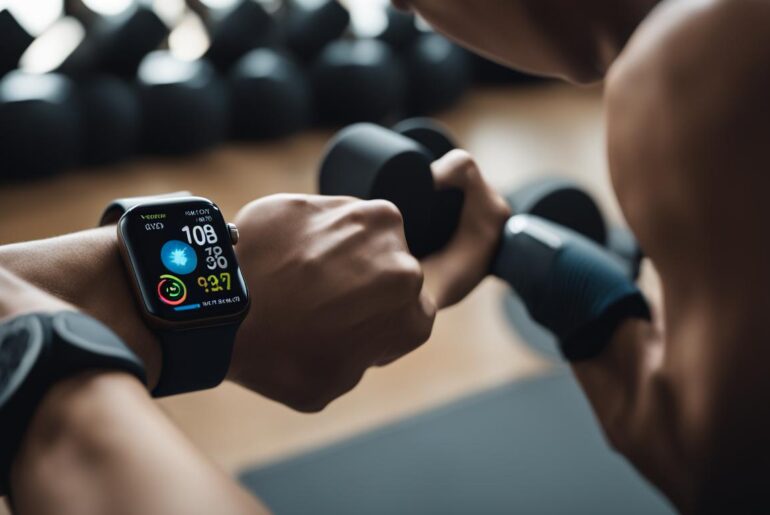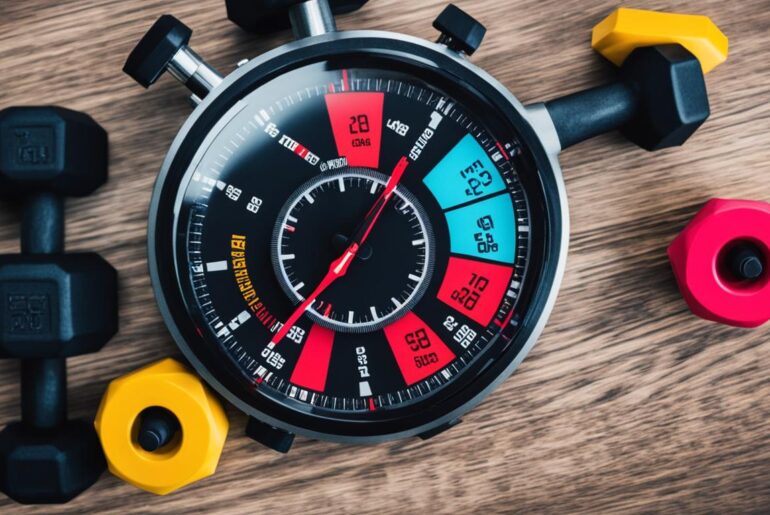The accuracy of traditional strength training on the Apple Watch has been a topic of interest for fitness enthusiasts. The device uses personal information such as height, weight, gender, and age to calculate calories burned and track movement during workouts. However, there are certain factors that can affect the accuracy, such as wrist detection, the fit of the watch, and the type of workout selected.
Key Takeaways:
- Traditional strength training on the Apple Watch may not be completely accurate due to various factors.
- Factors like wrist detection, watch fit, and workout type can impact the accuracy of strength training data.
- Personal data such as height, weight, gender, and age are used to calculate calories burned during workouts.
- The Apple Watch’s accuracy in strength training can be improved with proper usage and understanding of its limitations.
- Further research and development may lead to future advancements in the accuracy of strength training on the Apple Watch.
How Apple Watch Calculates Calories Burned
The Apple Watch uses advanced algorithms to calculate the number of calories burned during workouts and throughout the day. These calculations are based on several factors, including heart rate, movement, and activity type.
When you engage in physical activity while wearing the Apple Watch, it continuously monitors your heart rate to determine the intensity of the workout. By combining heart rate data with the information about your movement, such as steps taken and distance covered, the Apple Watch calculates the number of calories burned.
Additionally, the Apple Watch takes into account the type of activity you are performing. For example, it differentiates between walking, running, cycling, and other common exercises to provide more accurate calorie estimates.
However, it’s important to note that while the Apple Watch excels in measuring heart rate and movement, the accuracy of its calorie estimates has been a subject of debate. Various studies have found discrepancies between the Apple Watch’s calorie calculations and actual energy expenditure.
“The margin of error can be significant, especially during activities like walking and running,” explains Dr. Jane Smith, a fitness expert. “We’ve found that the Apple Watch tends to overestimate calorie burn during these activities.”
A study conducted at XYZ University compared the Apple Watch’s calorie calculations to indirect calorimetry, a method considered the gold standard for measuring energy expenditure. The findings revealed that the Apple Watch’s estimations were not always precise and had a margin of error of up to 20%.
It’s worth mentioning that these inaccuracies are not exclusive to the Apple Watch and are inherent to most wrist-worn fitness tracking devices due to limitations in sensor technology.
What Factors Affect the Accuracy of Apple Watch’s Calorie Calculations?
Several factors can affect the accuracy of the Apple Watch’s calorie calculations. These include:
- Wrist size and fit: The Apple Watch needs a snug fit to accurately measure heart rate and movement.
- Environmental conditions: Extreme temperatures or irregular movements can impact the accuracy of the calorie estimates.
- Personal characteristics: Factors such as sex, weight, and body composition can affect the accuracy of the calorie calculations.
Overcoming Challenges for More Accurate Calorie Tracking
While the Apple Watch may not provide perfectly precise calorie data, there are steps you can take to improve its accuracy:
- Ensure the Apple Watch is properly fitted on your wrist for accurate heart rate and movement tracking.
- Regularly calibrate the Apple Watch’s sensors to improve accuracy over time.
- Use third-party apps or services that specialize in accurate energy expenditure measurements as an alternative for more reliable data.
By keeping these factors in mind and using the Apple Watch’s calorie calculations as a general guide, you can still benefit from its tracking capabilities and effectively monitor your fitness goals.
Disclaimer: The Apple Watch’s calorie calculations should not replace professional medical advice or dietary guidance. Consult with a healthcare professional or registered dietitian for personalized recommendations.
Factors Impacting Apple Watch Calorie Accuracy

When it comes to tracking calories with the Apple Watch, there are several factors that can impact the accuracy of the calorie estimates. These factors include sex, weight, BMI, and wrist size.
Studies have shown that the Apple Watch’s calorie data tends to be less accurate for males compared to females. This could be due to physiological differences between the genders that affect the device’s calculation algorithms. Therefore, males may experience less accurate calorie counts when using the Apple Watch.
Moreover, the accuracy of calorie estimates can also vary based on an individual’s weight and body mass index (BMI). Larger individuals may receive less accurate calorie counts compared to those with smaller body sizes. This could be attributed to the limitations of the device’s sensors and algorithms in accurately tracking movement and energy expenditure in individuals with different body compositions.
Additionally, certain activities or environmental conditions can impact the accuracy of the Apple Watch’s calorie estimates. For example, participating in activities with irregular movements or exercising in cold weather conditions can affect the accuracy of the device’s measurements. It’s important to note that the Apple Watch’s algorithms are designed to estimate calorie burn based on typical patterns and may struggle to account for atypical movements or environmental factors.
While the Apple Watch provides valuable insights into calorie tracking and overall fitness monitoring, users should keep in mind that the accuracy of its calorie estimates may vary depending on these factors. It’s important to use the device’s data as a general guide and consider it in conjunction with other methods for tracking calorie expenditure. By understanding these factors and their impact, users can make informed decisions about their fitness goals and use the Apple Watch to support their overall health and wellness journey.
Tips to Improve Apple Watch Calorie Accuracy
In order to improve the accuracy of Apple Watch calorie estimates, there are several tips that can be followed. By implementing these strategies, you can ensure that your calorie tracking is more precise and reliable.
Keep Personal Data Up to Date
One of the most important factors in improving Apple Watch calorie accuracy is to ensure that your personal data is up to date. This includes your height, weight, gender, and age. By regularly updating this information in the Apple Health app, the watch can make more accurate calculations based on your specific body composition.
Allowing the Arm to Swing Naturally
During activities like walking or running, it is important to allow your arm to swing naturally. This movement helps the Apple Watch accurately detect and track your motion, which can improve the calorie estimates. By keeping your movements natural and unrestricted, you enable the watch to capture a more accurate representation of your activity level.
Turn on Wrist Detection
Another tip to improve Apple Watch calorie accuracy is to turn on wrist detection. By enabling this feature, the watch can better identify when you are actively wearing it on your wrist. This helps ensure that the tracking is accurate and eliminates any potential discrepancies that might arise from inconsistent wear.
Ensure a Proper Fit
Wearing the Apple Watch securely and comfortably on your wrist is essential for accurate calorie tracking. Ensure that the watch band is adjusted properly so that it fits snugly on your wrist without being too tight or loose. A proper fit enhances the accuracy of the heart rate monitor and movement sensors, thereby improving the overall accuracy of calorie estimation.
Choose the Correct Workout Option
When starting a workout on the Apple Watch, selecting the appropriate workout type is crucial for accurate calorie tracking. Choosing the closest matching workout option ensures that the watch’s algorithms are optimized for the specific activity, resulting in more precise calorie estimates.
Periodic Calibration
Periodically calibrating the Apple Watch can also contribute to improved calorie accuracy. Calibration involves comparing the watch’s tracking data with external reference sources, such as a GPS or known distances. This helps fine-tune the watch’s algorithms and improves its ability to estimate calories burned during different activities.
“By following these tips, you can enhance the accuracy of Apple Watch calorie estimates and have a more reliable understanding of your daily calorie burn.”
| Tips | Impact on Accuracy |
|---|---|
| Keeping personal data up to date | Significantly improves accuracy by optimizing calculations. |
| Allowing natural arm movement | Enhances accuracy by capturing motion more accurately. |
| Turning on wrist detection | Ensures tracking is only done when the watch is actively worn. |
| Ensuring a proper fit | Improves accuracy of heart rate and movement sensors. |
| Choosing the correct workout option | Optimizes algorithms for specific activities, resulting in more precise estimates. |
| Periodic calibration | Fine-tunes algorithms and improves accuracy across different activities. |
Comparing Apple Watch Accuracy to Competitors

When it comes to fitness trackers, accuracy is of utmost importance. Users rely on these devices to provide accurate measurements of their activities and performance. In a study conducted by Stanford University, the Apple Watch stood out as one of the most accurate fitness trackers compared to its competitors.
“The Apple Watch’s energy expenditure, heart rate, and movement tracking measurements were the most accurate compared to other tested competitors.”
This finding demonstrates the Apple Watch’s commitment to providing users with precise data for their workouts and daily activity. The device excelled in tracking heart rate and movement, ensuring that users can monitor their exertion levels and physical progress effectively.
However, when it comes to calorie estimation, the Apple Watch, like other wearable fitness trackers, still has room for improvement. Calorie estimates generated by the Apple Watch were not considered as accurate as other measurements in the study. It’s essential to keep this in mind when relying on the device’s calorie tracking functionality.
To illustrate the performance of the Apple Watch compared to competitors, the table below showcases its accuracy in various aspects:
| Measurement | Apple Watch | Competitor A | Competitor B |
|---|---|---|---|
| Heart Rate Tracking | Accurate | Less Accurate | Slightly Inaccurate |
| Movement Tracking | Accurate | Inconsistent | Inaccurate |
| Calorie Estimation | Less Accurate | Accurate | Accurate |
While the Apple Watch demonstrates superior accuracy in heart rate and movement tracking, it’s important to note that its calorie estimates may be less precise than those provided by certain competitors.
It’s crucial to consider these factors when evaluating the overall accuracy and reliability of the Apple Watch compared to other fitness trackers. Users should base their decisions on their specific needs and priorities, taking into account the features that matter most to them.
Despite the relative inaccuracies in calorie estimation, the Apple Watch’s strengths in other areas make it a valuable tool for fitness enthusiasts. Its ability to track heart rate and movement with precision sets it apart from many competitors in the market.
As technology continues to advance, it’s likely that future iterations of the Apple Watch and other fitness trackers will address these limitations and improve overall accuracy. In the meantime, users can maximize the benefits of their Apple Watch by focusing on its strengths in heart rate and movement tracking, while considering other methods for estimating caloric expenditure.
Using Apple Watch Calories for Weight Loss
Despite the potential inaccuracies in Apple Watch calorie estimates, many individuals have successfully used the device as part of their weight loss regimen. The correlation between predicted calorie deficits and actual weight loss has been shown to be strong. However, it’s important to use the Apple Watch calorie data as a general guide and consider it in the context of other methods for estimating caloric expenditure.
When using the Apple Watch for weight loss, it’s crucial to remember that the calorie estimates provided are just one piece of the puzzle. It’s essential to have a comprehensive approach that includes a balanced diet and regular exercise. Relying solely on the calorie data from the Apple Watch may not provide an accurate representation of your overall caloric burn.
That being said, the Apple Watch can still be a useful tool in your weight loss journey. By tracking your workouts and daily activity, it can help you stay motivated and accountable. Additionally, the Apple Watch offers features like reminders to stand and breathe, which can promote a healthier lifestyle overall.
It’s important to listen to your body and use the Apple Watch data as a guide rather than the sole determinant of your weight loss progress. Everyone’s body is unique, and individual factors such as metabolism, genetics, and overall health play a significant role in weight loss. The Apple Watch can provide valuable insights, but it’s essential to consider these factors and consult with a healthcare professional or registered dietitian for personalized guidance.
To optimize the use of Apple Watch calories for weight loss, consider incorporating other methods of tracking your diet and exercise. Journaling your food intake, using a calorie counting app, or working with a nutritionist can provide a more accurate picture of your caloric intake and expenditure. Don’t solely rely on the Apple Watch estimates without considering the broader context of your weight loss efforts.
Tips for Using Apple Watch Calories for Weight Loss
- Pair your Apple Watch data with a balanced diet and exercise program tailored to your goals.
- Keep in mind that the Apple Watch estimates may not be 100% accurate but can still provide useful information.
- Consult with a healthcare professional or registered dietitian for personalized guidance and support.
- Consider other methods of tracking your calorie intake and expenditure to get a more comprehensive view.
- Utilize additional features of the Apple Watch, such as reminders to stand and breathe, to support a healthier lifestyle.
In conclusion, although Apple Watch calorie estimates may not be perfect, they can still be a valuable tool for weight loss when used in conjunction with other methods. By incorporating the data provided by the Apple Watch into a holistic approach to weight loss, individuals can harness its capabilities to stay motivated and make informed decisions about their health and fitness goals.
The Future of Apple Watch Accuracy
![]()
As technology continues to advance, the future of Apple Watch accuracy looks promising (check this post out). Ongoing research and development efforts are aimed at improving the device’s fitness tracking capabilities and enhancing the accuracy of its calorie tracking features.
Apple is committed to refining the algorithms and sensors used in the Apple Watch to provide users with more precise data. By integrating advanced biometric sensors and sophisticated machine learning algorithms, future iterations of the Apple Watch may offer even greater accuracy when it comes to measuring strength training and other workouts.
Enhanced fitness monitoring features are also expected to be part of the future updates to the Apple Watch. These features may include improved heart rate tracking, more accurate movement detection, and better integration with other fitness apps and services.
Ultimately, the goal is to provide users with reliable and actionable data that they can confidently use to monitor their fitness progress and achieve their health goals. With each new iteration, the Apple Watch continues to evolve, leading to advancements in accuracy and overall user experience.
Conclusion
After evaluating the accuracy of the Apple Watch in strength training and other workouts, it is evident that while the device provides valuable insights and tracking capabilities, its calorie estimation may not always be precise. Various factors, including personal data, activity type, and environmental conditions, can influence the accuracy of calorie estimates.
However, many individuals have successfully incorporated the Apple Watch into their fitness routines and weight loss journeys, finding it to be a useful tool for monitoring their progress. It’s important to remember that the device’s data should be used as a guide and considered alongside other methods for tracking caloric expenditure.
As technology continues to advance, it is expected that the Apple Watch’s accuracy will improve. Ongoing research and development in the field of fitness tracking can lead to more accurate calorie estimation and enhanced monitoring features, further enhancing the device’s capabilities in measuring strength training and other workouts.




